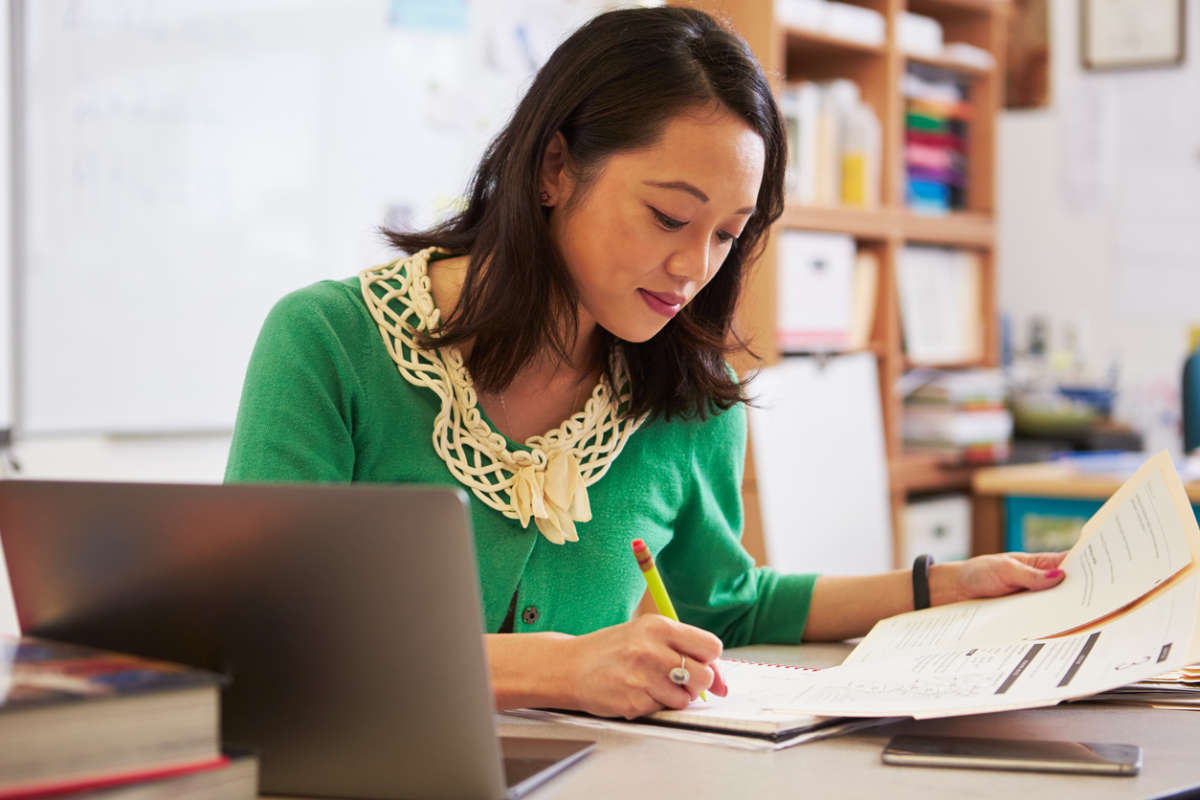
What’s In My Sub Binder?
- Topics : Classroom Ideas
 By Amy McKinney
By Amy McKinney
For teachers, taking a day off from school can be a headache. Here's how to make sure a substitute is as prepared as possible.

Teachers know just how inconvenient it is to take off a day from school.
Lots of jobs only require employees to call out and the work is there for when they return.
Not so with teaching.
Someone will need to greet the 25 children waiting at the door in the morning. Twenty-five young minds that need to be challenged. Twenty-five kids who need a teacherâs guidance and support.
So how do you prepare your substitute for your inevitable absence? To help make your time away from school as stress-free as possible, teachers have relied on not just sub plans, but entire sub tubs. I realized a long time ago that maintaining a sub tub, a bin full of materials and supplies to help a sub get through her day, was something my Type B Teacher heart would never be able to accomplish. So, I set my goal at a more realistic level: a sub binder.
"With the challenges that substitutes are tasked with each time they enter our classrooms, and with all the
work teachers do on a daily basis to inspire our students,
I decided a long time ago that I was going to
provide my sub with a set of plans that would help her
feel successful, and at the same time know that my energy was being focused in a way that would help my
students and me feel successful, too."
My sub binder has everything my sub might need throughout the day, and is divided into four sections: School, Classroom, Students, and Curriculum.
The key is to not overload it with unnecessary or redundant materials.
Except for Curriculum, each section houses information that essentially remains the same and needs minimal updating throughout the school year. I created a Table of Contents that explains whatâs in each section and keeps pages streamlined, with distractions to a minimum. My sub can easily flip to any tab to find what she needs.
School
The first section, School, describes any school-wide rules and information someone new would need to know, such as arrival and dismissal times, phone numbers to the office, nurse, and school guidance counselor, emergency procedures, and where our âGo Boxâ (a black clipboard storage box containing emergency contact information that we use for any evacuation drills) can be found.
Classroom
The next section, Classroom, includes information that pertains to my class, such as a class roster, how to submit attendance and lunch count, how flexible seating works for my students, and an explanation of the classroom management system that I use.
Students
In the third section, Students, I keep a list of individual student needs and schedules for support, like speech or occupational therapy and learning support. I also mention students who would be helpful throughout the day, and those who sheâll need to keep a closer eye on (as well as methods that have worked in dealing with students who make poor choices).
Curriculum
The last section of my binder, Curriculum, needs to be updated regularly to reflect the work weâre doing at the time of my absence. However, I keep a set of emergency plans that are more generic, in case Iâm not able to submit up-to-the-minute plans (and to preserve my sanity!).
To help make the day go more smoothly, all of my plans are written in table format to follow our daily schedule. Since we use a purchased curriculum program for ELA, math, and science, I simply give a short description of the activity, fill in the lesson number, and refer my sub to the teacher manual for more specific instructions. Some teachers keep a stack of Time for Kids or Scholastic News articles in their backup sub plans. I tend to use them for our text mapping and close reading lessons, so I donât always have extras on hand.
Thankfully I havenât needed to take off a great deal due to illness, but I do need to attend PD workshops and district committee meetings that take me away from my classroom. With the challenges that substitutes are tasked with each time they enter our classrooms, and with all the work teachers do on a daily basis to inspire our students, I decided a long time ago that I was going to provide my sub with a set of plans that would help her feel successful, and at the same time know that my energy was being focused in a way that would help my students and me feel successful, too.
Follow TeacherVision on Instagram, Facebook, Twitter, Pinterest, and Google+.
Want to read more from this author? Check out Amy's tips for managing student behavior, dealing with difficult parents, building a positive classroom community, making flexible seating work for unique learners, or learn what special education teachers wish "regular" education teachers knew.
Author Bio:
Amy McKinney, M.Ed., is a third grade teacher in Pennsylvania. She has been teaching for eleven years, eight of them in special education. Her experience working with students with special needs has helped form her philosophy on teaching and collaborating with her colleagues. Follow her on Instagram: @theuniqueclassroom.









